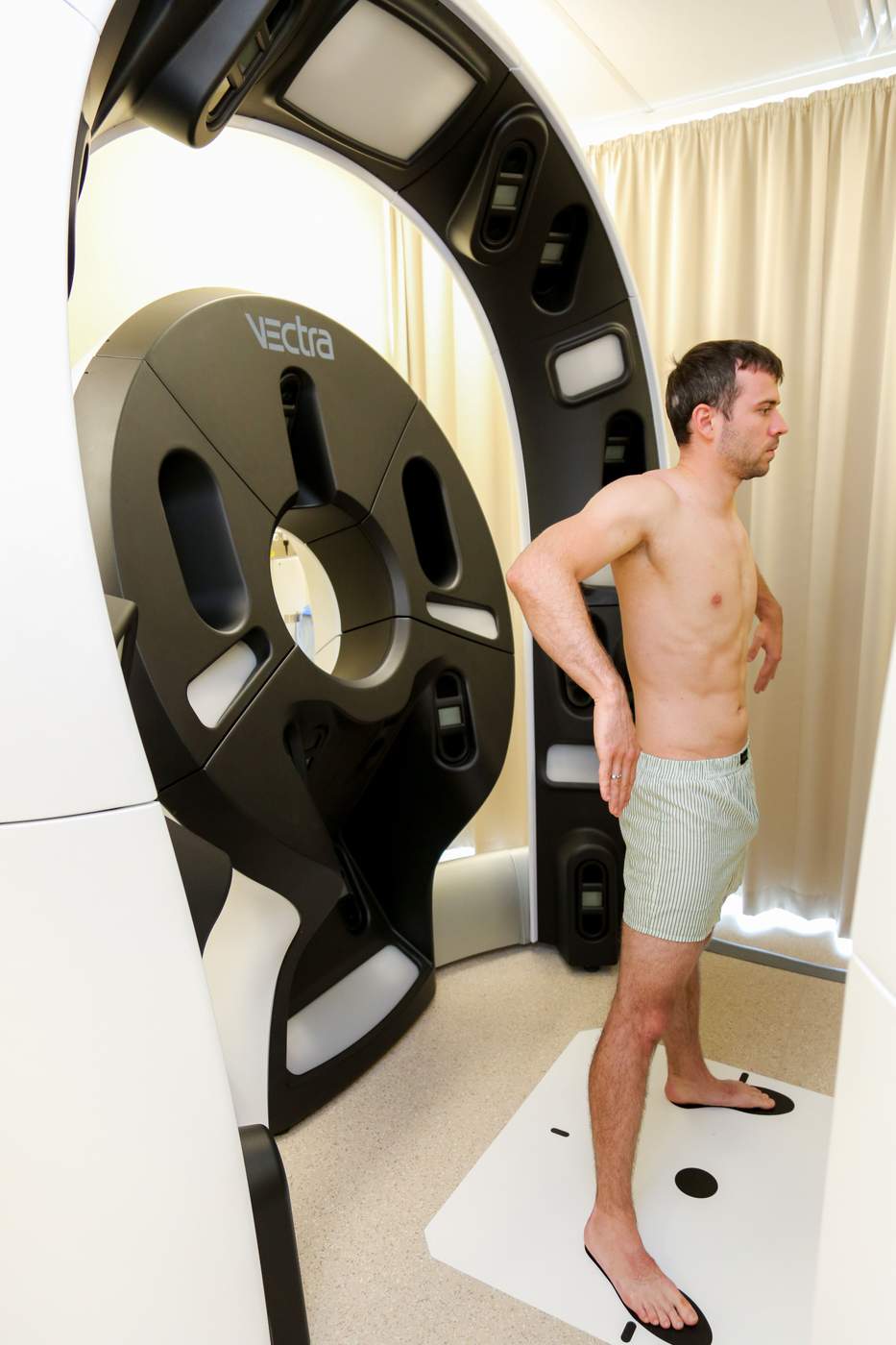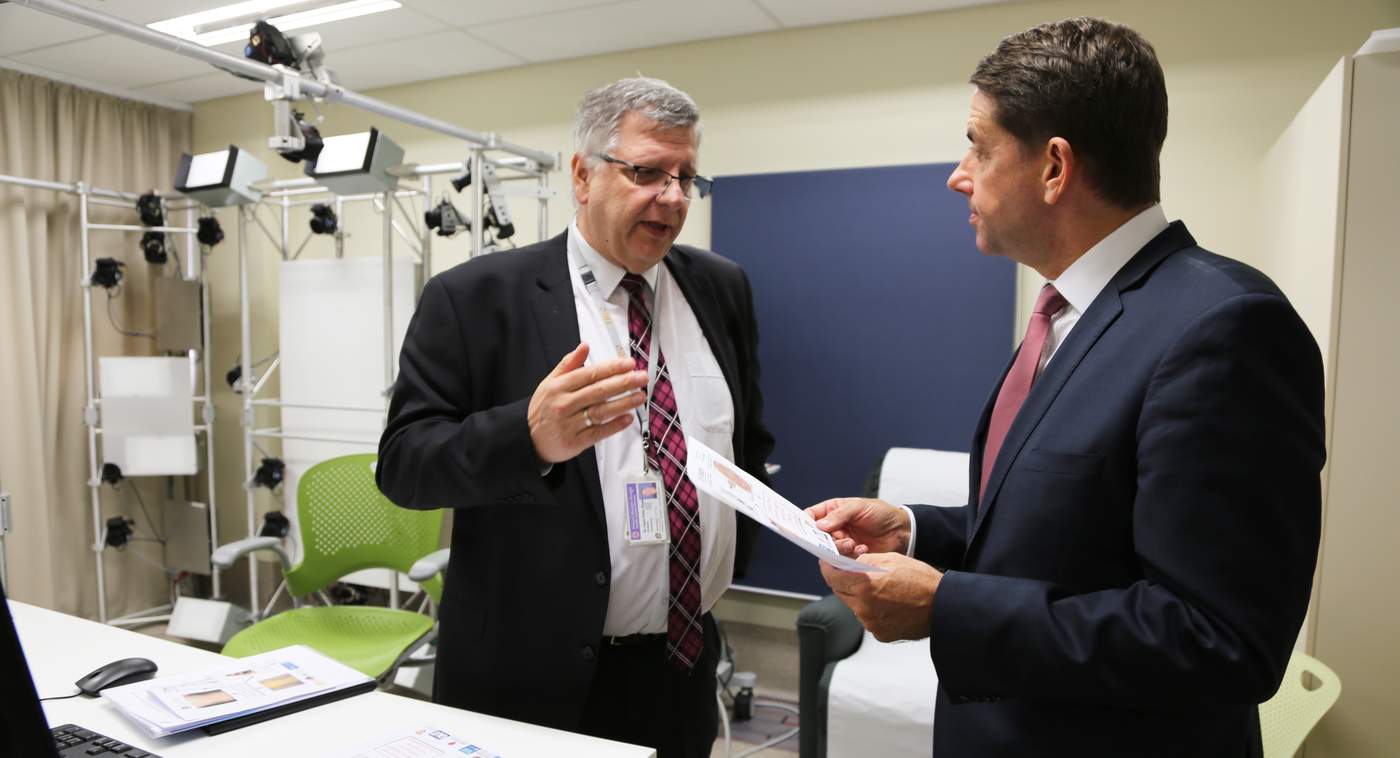“The ultimate goal is clear – no one should die of skin cancer.”
The UQ Chair in Dermatology and Director of the Dermatology Research Centre at the UQ Diamantina Institute, Professor H Peter Soyer, is determined to make this objective a reality.
But with Australia’s high UV index, love of beach culture and affinity for spending time outdoors, is this ambitious goal possible?
The statistics are sobering.
Accounting for 80 per cent of all cancers diagnosed in Australia each year, skin cancer is the most common form of cancer diagnosed – four times more likely to occur than any other – and two in three Australians will be diagnosed with it by the age of 70. Nationally, skin cancer is responsible for around 2000 deaths every year.
Memorable prevention campaigns like ‘slip, slop, slap’ – now expanded to include ‘seek’ for ‘seek shade’ and ‘slide’ for ‘slide on sunglasses’ – have had some success in raising awareness and changing attitudes and behaviours. However, to effectively reduce Australia’s skin cancer mortality rate, early detection and treatment are essential.
Enter Professor Soyer and his teams of dedicated researchers, who are pioneering innovative ways to better detect, diagnose and even predict the three main types of skin cancers – melanoma, squamous cell carcinoma and basal cell carcinoma.
The UQ-led Centre of Research Excellence (CRE) for the Study of Naevi, funded by the National Health and Medical Research Council (NHMRC), is a collaborative project between UQ, QIMR Berghofer Medical Research Institute, Cancer Council Queensland, University of Sydney and Queensland University of Technology.
Professor Soyer heads the research initiative, based in the UQ Diamantina Institute at the Translation Research Institute (TRI) in Brisbane, which investigates a variety of pathways to the early detection, diagnosis and prediction of skin cancers.
“For the general population, the earlier the cancer is detected, the better the outcome,” he says.
An innovative 3D-imaging technology is at the core of one of the Centre’s projects that will revolutionise mapping and monitoring of high-risk patients and early detection and diagnosis of skin cancers.
The VECTRA Whole Body 360 imaging system uses 92 cameras to construct a 3D avatar of a patient with detailed reproduction of the skin.
An extra camera captures and adds dermoscopic images of individual lesions to the avatar, which can show additional features of the lesion.
“The primary use of the total body photography system will be to track changes in skin lesions, which are a tell-tale sign of a developing skin cancer,” Professor Soyer says.
This record of the patient’s whole skin surface can be referred to during follow-up visits to detect changing moles, revolutionising the way skin cancers and conditions are mapped, monitored and diagnosed.
Researchers are also studying how mobile teledermoscopy – that is, detectors attached to smartphones – could be used for skin self-examinations, allowing patients to keep track of their own lesions over time to improve early detection.
Timeline:
2007: Professor H Peter Soyer is appointed inaugural Chair in Dermatology by The University of Queensland
2011: National Health and Medical Research Council (NHMRC) grant is received to research the effects of naevogenesis susceptibility genes and phenotypic correlation with dermoscopic characteristics of naevi
2012: Australian Research Council (ARC) grant towards the development of image-guided skin microbiopsy technology is received
2014: First detailed description of naevus phenotype of MITF E318K mutation carrier melanoma patients is published
2015: ARC Discovery Project grant is awarded for engineering the next generation of terahertz laser imaging systems in skin cancer
2015: Five-year NHMRC Centre of Research Excellence (CRE) grant is awarded for the study of naevi
2016: Australian Skin and Skin Cancer Research Centre (ASSC) is established with joint funding from UQ and QIMR Berghofer Medical Research Institute
2017: Professor H Peter Soyer is awarded a Queensland Genomics Health Alliance (QGHA) grant for a genomics approach for screening of patients at high risk of melanoma
2017: Professor H Peter Soyer is awarded a Medical Research Future Fund (MRFF) Next Generation Clinical Researchers Program Practitioner Fellowship
(Photo credit for opening page: iStock/top10; this page: iStock/LFO02; beach page: iStock/ymgerman)






